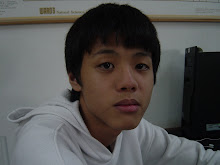Chapter 4 is about the move block.
This move block is very convenient for us, while we are programming.
It lets us to control more than one motor in one icon, and we can also change the power of each motor. It saves a lot of size of the programmed icons, and programmed file. However, the problem for this move block is that, the direction is always same. Therefore, I can not do some kind of movement which requires two different direction of motors at same time.
In the investigation of Right Turn, I learned how to rotate my robot. There are two ways to rotate my robot, and are swing turn, and point turn. They both rotates, but the movement of motors are different, and their whole movements are slightly different. Swing Turn, is when I only use one side of motor to rotate, which measn the one of the two motors will only move, and another one will not move. Oppose to this, Point turn, is when both motors are moving, but at opposite direction. Which means that one of two motors, will go forward, and another one will go backward. The difference between whole movement of two types of rotations is the space they require to turn. Swing Turn requires a lot more space, as it is going over to the outside. However Point Turn only requires just the space of the robot itself, as it is turning on the point, where the robot stands.
In the investigation of Measured Turn, I learned how to control the angles of rotations. I can always know how much my robot will turn, by calculation. In order to calculate, I need to know how much the angle for my robot to turn, circumferences of the circle, and circumferences of the wheel of my robot. By these informations, I can set up and direction and from 0 to 360 degrees.
Final Class Blog
-
Robotics has come to an end after a semester of hard work and programming.
I have learned many new things such as robot construction, programming the
NXT, ...
16 years ago


